Video transcript below:
TL;DR
It’s really good. If you’re looking for a Half-Life style experience in VR, then this is pretty much it. It follows an identical structure, design philosophy, and even sense of humor, all made (mostly) by one person. I’m just a little embarrassed that it took me 7 years to notice this game even existed. If you enjoyed Half Life Alyx, or even the VR mods for the original Half Life Games, and you just want more of it, then I think Vertigo is the next best thing you can play.
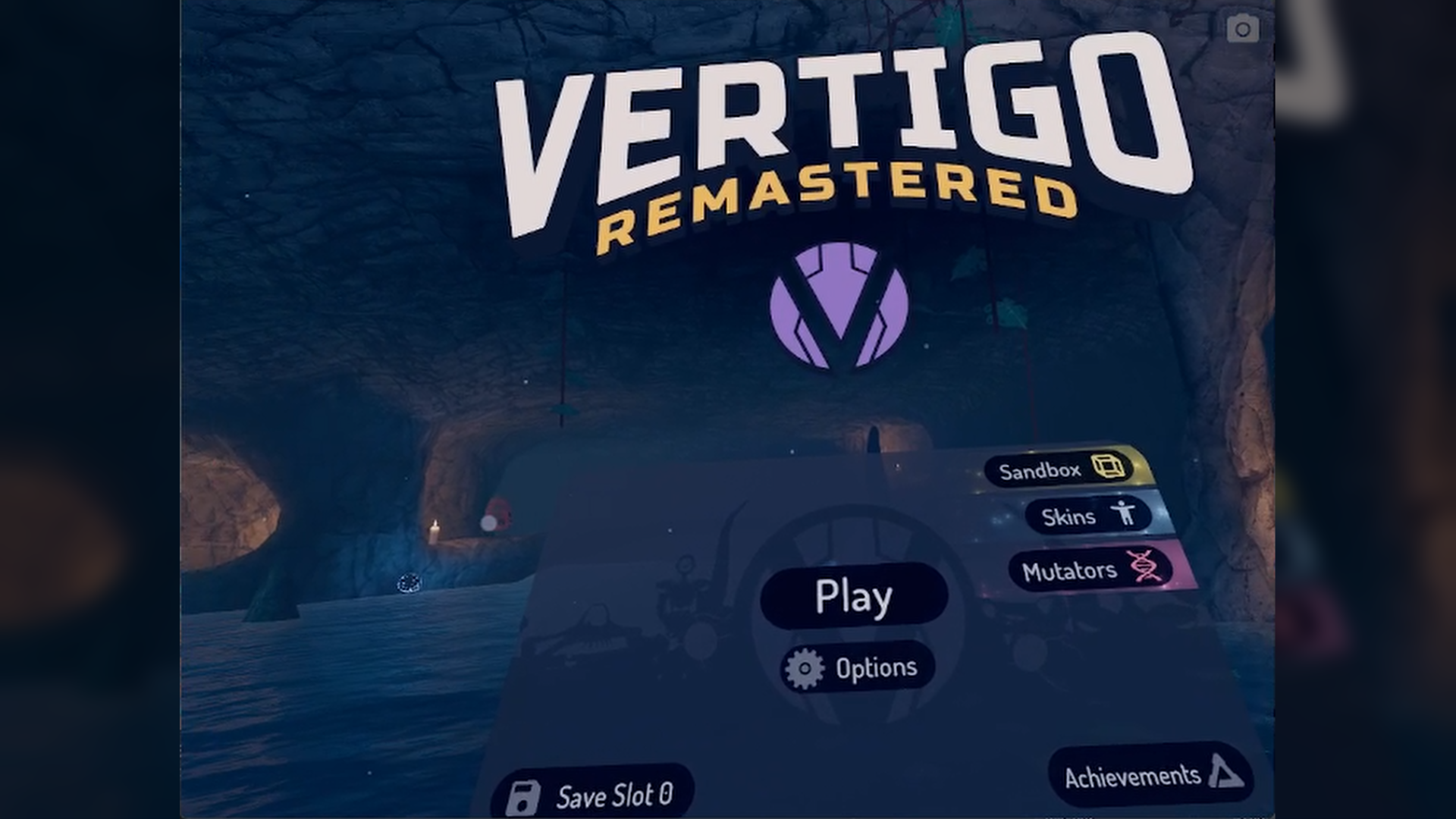
FULL REVIEW
Vertigo is so Half-Life it hurts. We all know about Half-Life Alyx and how great that game is, but it’s ironic to see that Vertigo feels more like a real Half Life game than Alyx does. That’s because Vertigo fully commits to what it wants to do and doesn’t make any concessions to make that happen, as opposed to Half Life Alyx where, despite it’s great quality, it still feels like a simpler, more watered down version of what a normal Half Life game would usually be.
This is mostly due to not wanting to overwhelm people that are new to playing games in VR. Motion Sickness and learning new control schemes while managing the action in front of you can be a daunting task if you’re not experienced, so I can understand bigger more mainstream games like Half Life accommodating to those needs.
However, Vertigo delivers some decent VR options to adjust to your comfort level, and then proceeds to not waste your time worrying about that in the actual game. It’s very clear that the developers played a lot of Half Life 1 and decided that they wanted to make their own version of it in VR, and I think they succeeded in that. In fact, I did a little bit more research and found out that the main developer for Vertigo is in fact a Valve employee and has a fair bit of experience in game dev, which is good to know. This dude clearly knows what he’s doing, and he wears his influences on his sleeve, but never in a way that feels pandering, cheap, or lazy. Saying that this game is like Half-Life 1’s long lost cousin is not an insult or a jab or implying that it’s used as a crutch for a lack of ideas. Far from it actually. Vertigo Remastered is brimming with creativity that sets it apart from pretty much any other VR game I’ve played in years.
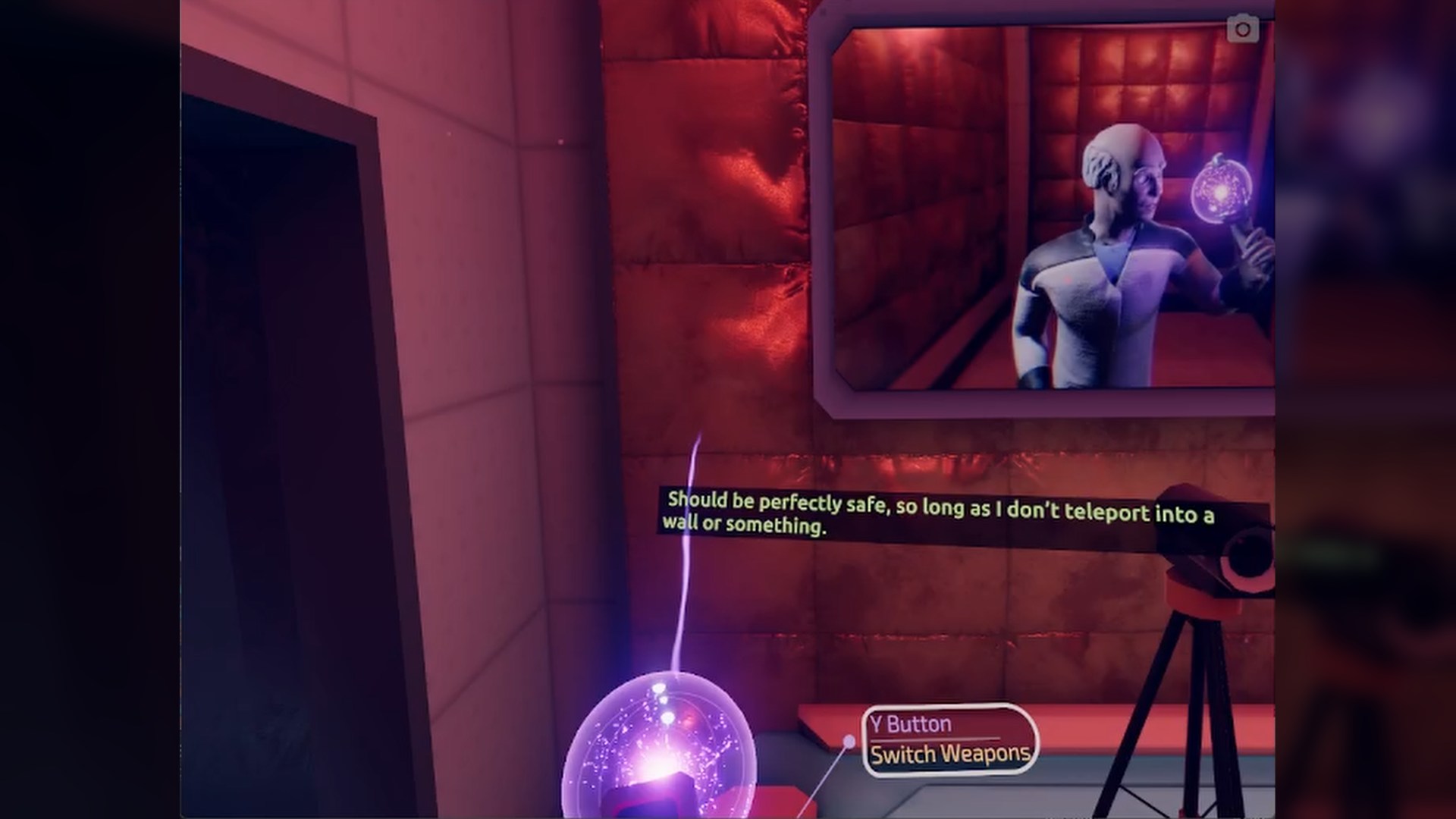
Vertigo never feels like they’re holding back in delivering the same atmospheric and action-packed experience that you would normally play on a flat screen. It doesn’t feel like a demo or that they tried to babysit you in order to properly transition you into VR. It’s a solid 4 hour experience that feels longer than it actually is, in a good way. There’s a lot going on here considering how short it is, with combat, exploration, puzzles, and pretty much anything a video game cosplaying as a Half Life game would have. And it does a really good job. It’s not just a good VR game, it’s simply a good game period.
And in some aspects, it might be a little bit too good at replicating the Half Life experience to the point that it risks losing it’s own identity in the process. It replicated Half Life even in the little things, like background music showing up in bigger set pieces for the game, but also fizzling out and leaving an awkward silence before you finish and move on to the next section, just like in the Half Life games. You have elevators that take you to different levels, or walk into hallways that just stop to load in a new level, just like Half Life. Always trying to do everything in real time with no cut scenes. Fighting robots from an organization that rules the world that remind you of the Combine. Fighting Aliens. Having certain parts of the game that are kinda scary, like in Half Life that sometimes has scary parts in it. A mute protagonist. Having most of the game take place inside a large intricate facility, but eventually transitioning into the outside world, and then more alien environments. I think it treads the line a little too closely and the game would’ve benefited from branching out a little bit and doing things more differently, because it seriously got to the point where I could predict exactly how certain parts of the game would play out by simply remembering how Half Life 1 went down.
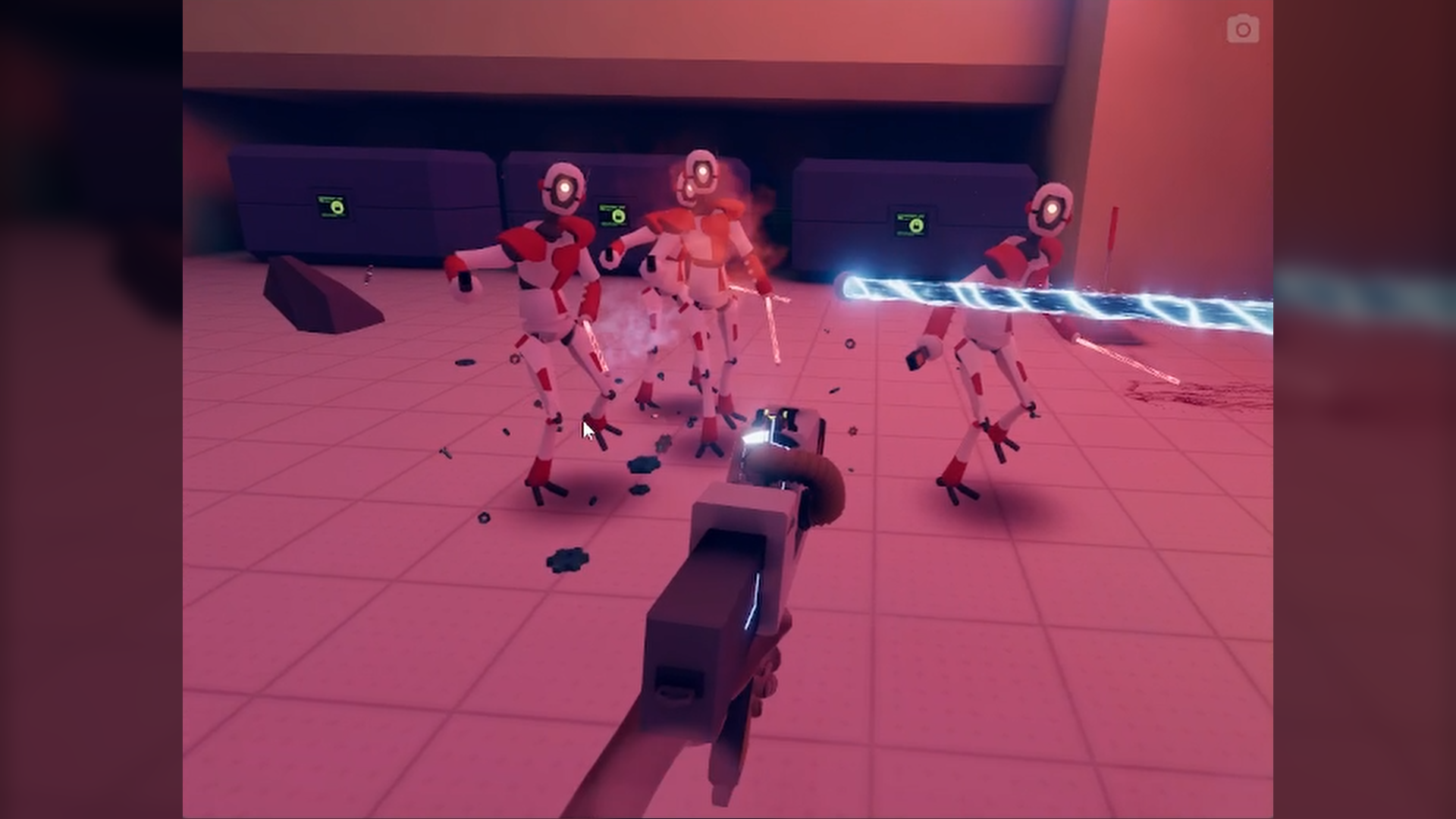
But despite all of these concerns, and despite this being a remaster of an old 2016 release, I had a great time playing the entire campaign. I will now take some time to explain why it was so much fun while pointing out some parts where it wasn’t.
First off, the controls. Probably one of the most important things to nail down in a VR game. You can either teleport or move normally with analog sticks. The teleportation in particular is fun to use, similar to Budget Cuts where you have a bubble in your hand of where you’re going to end up. You shove the bubble into your face, and bam, you’re there. This kind of teleportation has been done before, but it still feels great to use every time, especially when applying it in smart ways. One good example is creating a teleportation spot in the surface, and then you swim deep into a body of water to find something, and instead of swimming back up, you can just teleport and get out of there immediately. The game never tells you that you can do this. It’s something that you simply figure out on your own by just paying attention and understanding how the mechanics work.
I always had to remind myself of that due to the bad first impression I had of the game when I first played it, because I had trouble getting my controls right. I’m left handed, which makes it annoying when VR games default to the right hand when handling weapons. It’s double annoying when I change the options to left handed mode, which corrects the weapon handling, but now all of my movement controls are flipped as well. After more struggling, I managed to find a way to keep the right-handed movement while having left-handed weapon handling. I don’t know if you can tell from the footage here, but I was struggling a lot to move around at first. After I got used to the controls, I came across another obstacle, which was that I got super lost right at the start and had no idea how to move forward. This is less the game’s fault and more of just me being an idiot and not realizing that I had to break the glass window with my baton in that one part where it’s not super obvious that’s what you have to do. But on the bright side, that’s the one and only part of the game where I couldn’t advance. The rest of the game beyond that point was much better.
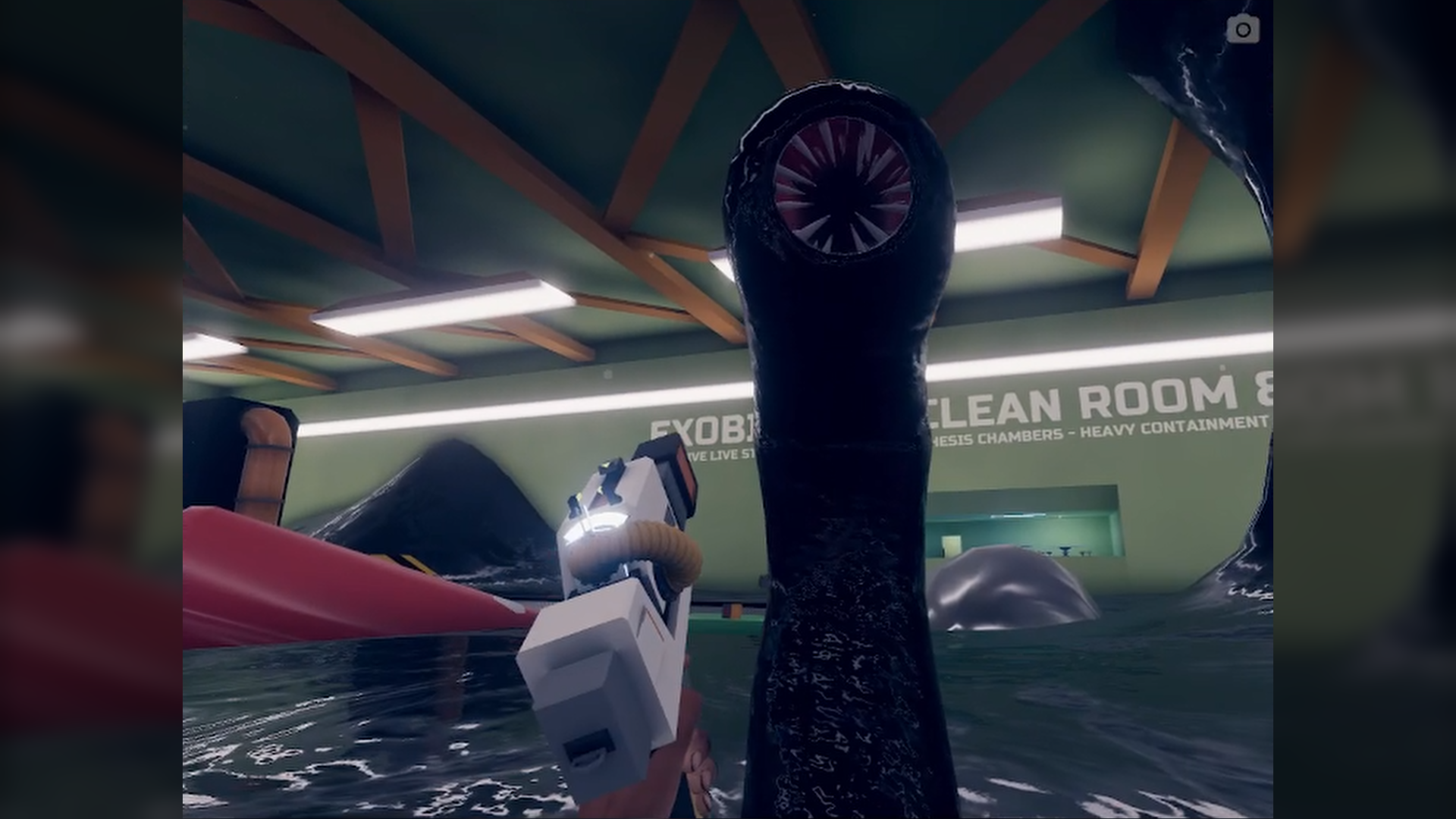
Now that we’re talking about controls, let’s talk about the gunplay. The guns were pretty unique and fun to use. Just like in Half Life, there’s a bunch of guns you can carry around with you, each with their own cartoon-y sci-fi thing going on that fits well with the equally cartoony world. You can tell that this is an old game from 2016 just from how the weapons handle. You have infinite ammo and all the guns run on a cooldown after firing a certain amount of shots. Of course, there’s a button press that lets you reload whenever you want, but it’s very different from how newer VR games tend to have you reload your gun in a more realistic manner. I honestly don’t mind it, and in many cases I prefer that over super realistic reload motions that distract from the action and are easy to mess up. It’s easier to handle and it’s faster to do so you spend more time having fun shooting stuff instead of getting bogged down in realism. Something that the second game would unfortunately end up changing.
The guns don’t seem balanced at all, and by that I mean that as soon you get bigger, better guns, like the one that shoots a big red laser, or the one that shoots grenades, there’s really no reason whatsoever for you to go back to a previous weapon. For example, you start the game with a basic pistol, but as soon as you get any other weapon, you will most likely never use the pistol again. I’m not lying when I say that I completely forgot that I had so many guns, when it’s so easy to plow through all the enemies with the giant red laser gun on one hand, and the electric baton on the other hand. I chose the baton because it ironically ended up acting as more of a shield than a melee weapon, since it can deflect laser blasts like it’s a lightsaber or something, so it ended up being very useful when I couldn’t get to cover fast enough.
Speaking of the baton, the melee in this felt super weird. The stick moves in this floaty wobbly kind of way where it never felt like I was truly swinging the stick around. In real life, I was moving the baton fast to bash an alien’s head in, but in the game, it felt like I was slowly and awkwardly tapping them. There’s just no impact to your swings. The second game has melee weapons that work like this as well and I can’t for the life of me see why that is.
It’s a small gripe, but I just thought I should mention it. The guns also look really nice and detailed. I loved stopping occasionally just to look at them.
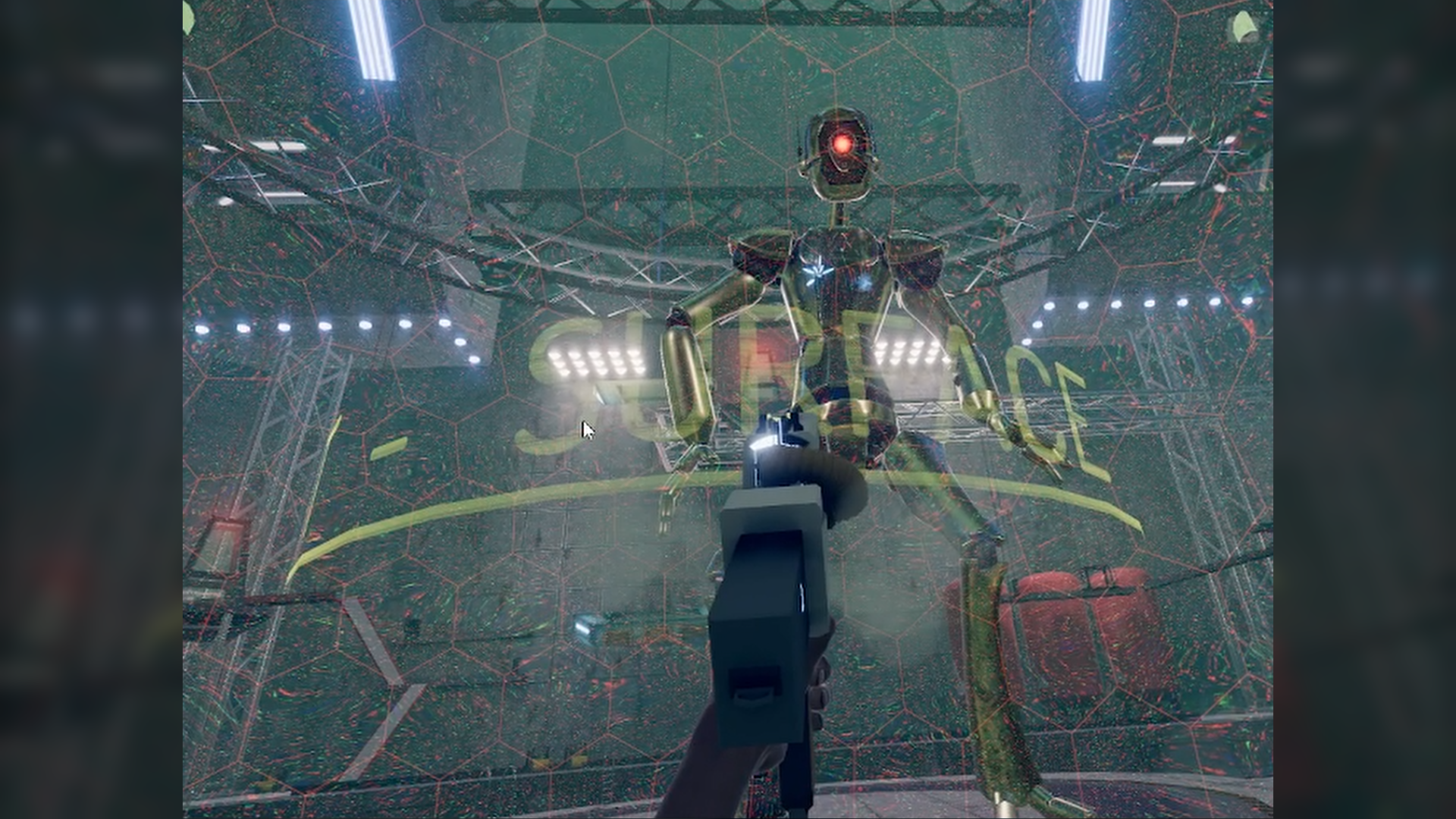
The graphics are fairly simple and cartoon-y. Sometimes I feel like I got trapped inside an episode of Jimmy Neutron, and other times the atmosphere is so perfect that it feels like it’s real. It goes back and forth, but nothing that I would consider bad or not immersive. If there was anything taking me out of the immersion was Steam VR itself, which is quite possibly one of the most useless and broken pieces of software I’ve ever had to use. I can’t tell you how many times I got yanked out of the game because SteamVR crashed for no reason. I know that all of those crashes were not the game’s fault, but I was still ripping my hair out having to deal with SteamVR keeling over and dying every time a loading screen would appear. Or who knows, maybe it is the game. I don’t know who to blame here, but either way, it happened a lot, and every single time I stopped playing was because I had a crash and quit out of frustration.
There was also a bug where sometimes I would die and see the loading screen forever, even though I technically respawned and could hear the sounds of myself interacting with the world, so I had to shut the game down and relaunch it.
There was another bug where most of the sound effects disappeared. Fortunately it only happened once.
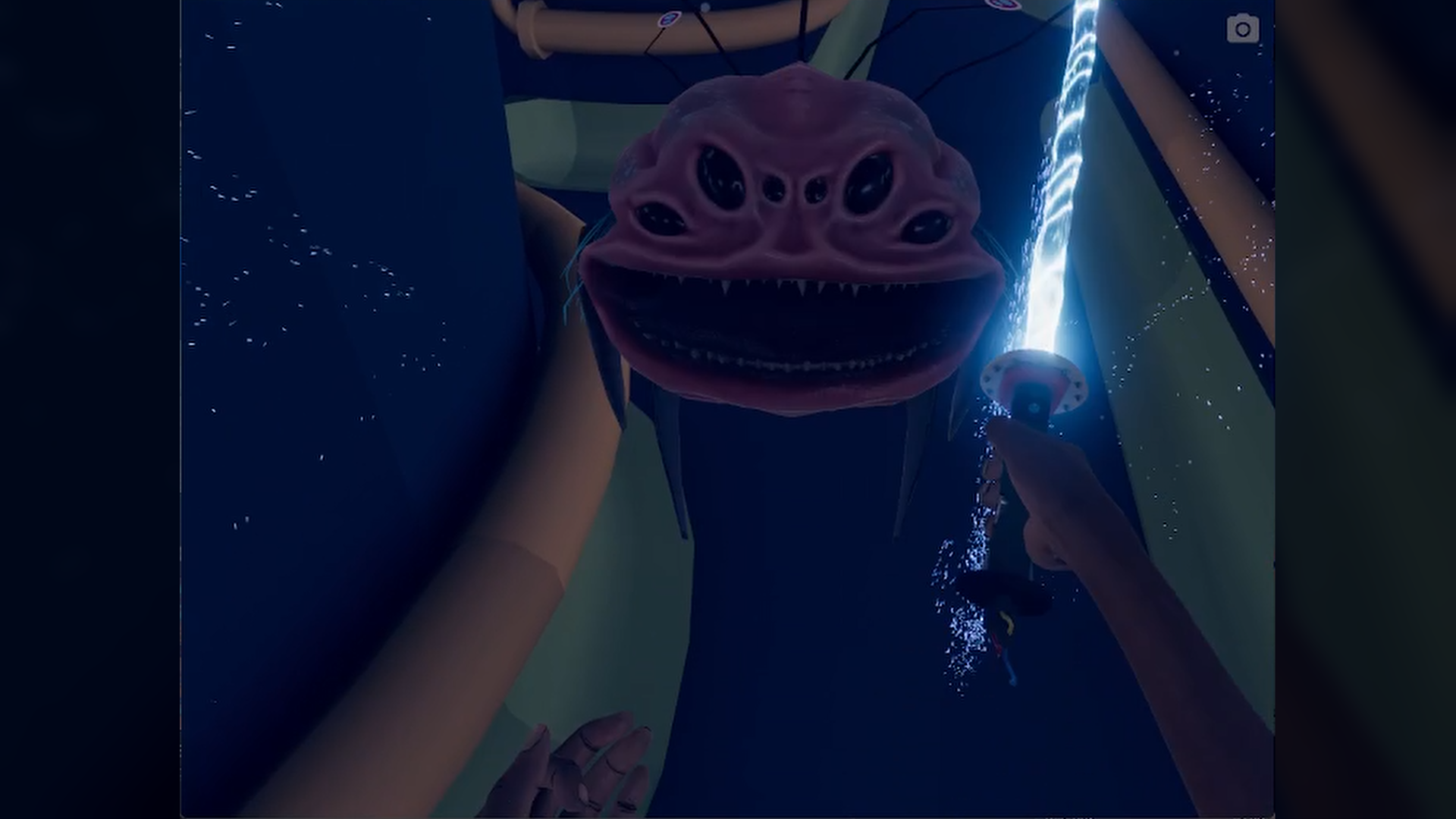
The music was good and it fit all situations. Again, if you’ve played Half-Life, it doesn’t sound all that different, and it’s implementation is identical in that the game is mostly quiet, but let’s the music kick in during special moments. There’s also little to no dialogue and voice acting. The story introduces some basic instructions and a few audio logs here and there, but for the vast majority of the time, you’re left to figure stuff out on your own.
I’ve read a ton of reviews speaking good things about Vertigo, but they always include a big asterisk in their language where they stress that you’ll enjoy it even more if you vibe with the game’s sense of humor. After playing through the whole game myself, I understand what they mean. The game’s humor feels similar to Portal 2, where they make fun of corporate office culture, and constantly make light out of dangerous situations.
Back in the days of Portal 1 and 2, it felt a bit more novel and funny. But as the years have moved forward, this almost exact replication of it in Vertigo 1 and 2 (which I’ll get to in a future review) very quickly left me numb. Nowadays, this kind of humor feels overdone, played out, and might I dare say, outdated. Every joke I saw or heard in both games I feel have already been said better and in a million other ways in the past. It wasn’t enough for me to want to put the game down, but I can understand if it proves bothersome for some people. I now understand why that was stressed so much in other reviews.
In terms of the story, it’s fairly simple. You’re a normal person that teleports into a different world, and now you have to find a way back home. Along the way, there’s clues and implications that mostly pay off in the second game. Honestly, I don’t think anyone will stop to think about the story too deeply, but that’s okay. If there’s anything story-wise that I don’t think was that great was mostly the ending.
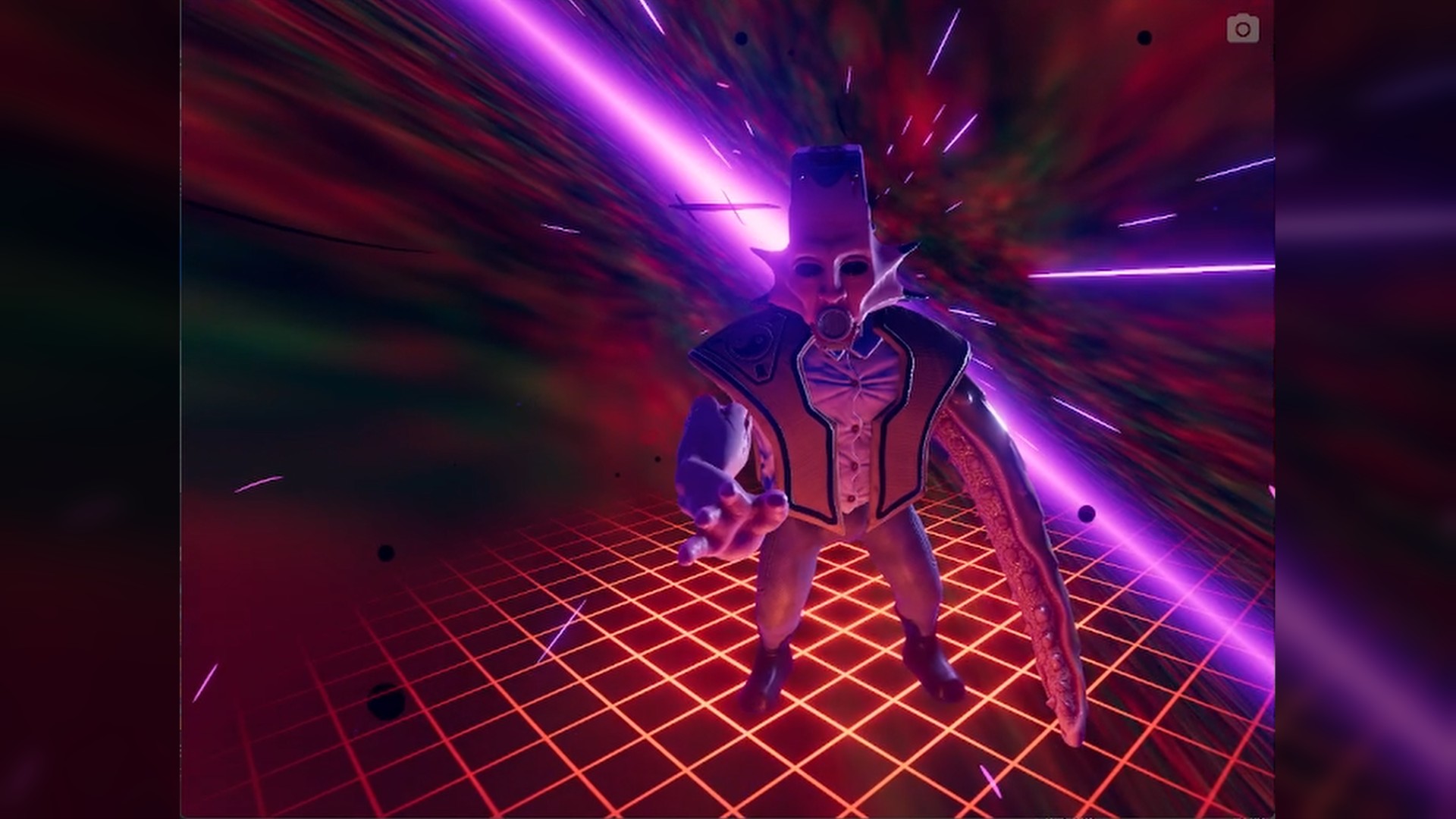
The last parts of the game are severely disappointing. It’s mainly waves of many enemies that you have to plow through. After fighting a few bosses throughout the game, you would think that there’s some bigger final boss to cap off the campaign. But no, there’s nothing here to spoil, because the game doesn’t give you anything. Just a ton of enemies you can easily shoot down, and then the game ends. If I had to make myself responsible for creating some sort of 10 commandments for Single Player Shooter Campaigns, one of the those commandments would be, “Though shall not have your final level be just a room full of enemies, or waves of enemies. Make an actual final boss please.”
There COULD’VE been a final boss, such as that one robot that’s in charge of the facility, but you see her get taken down in one hit by a different character and all you can do is just stand there and watch it happen, as this new character slams you back down and undoes all of the work that you spent 4 hours doing. I don’t think the ending was very satisfying, but the long road that it took for me to get there certainly was.
If you beat the game and want to play more, then there are some rewards that you can unlock that change your appearance based on what achievements you have, mostly by beating bosses. If that’s still not enough and you want to play more then there’s also the Sandbox DLC, which is basically Steam Workshop support for custom levels. And of course, you can create your own custom levels and publish them as well. I’ll be honest and say that I didn’t really spend any time with this mode. I checked out a couple of levels, thought they were okay and moved on. By this point I was wanting to get into Vertigo 2 as soon as possible.
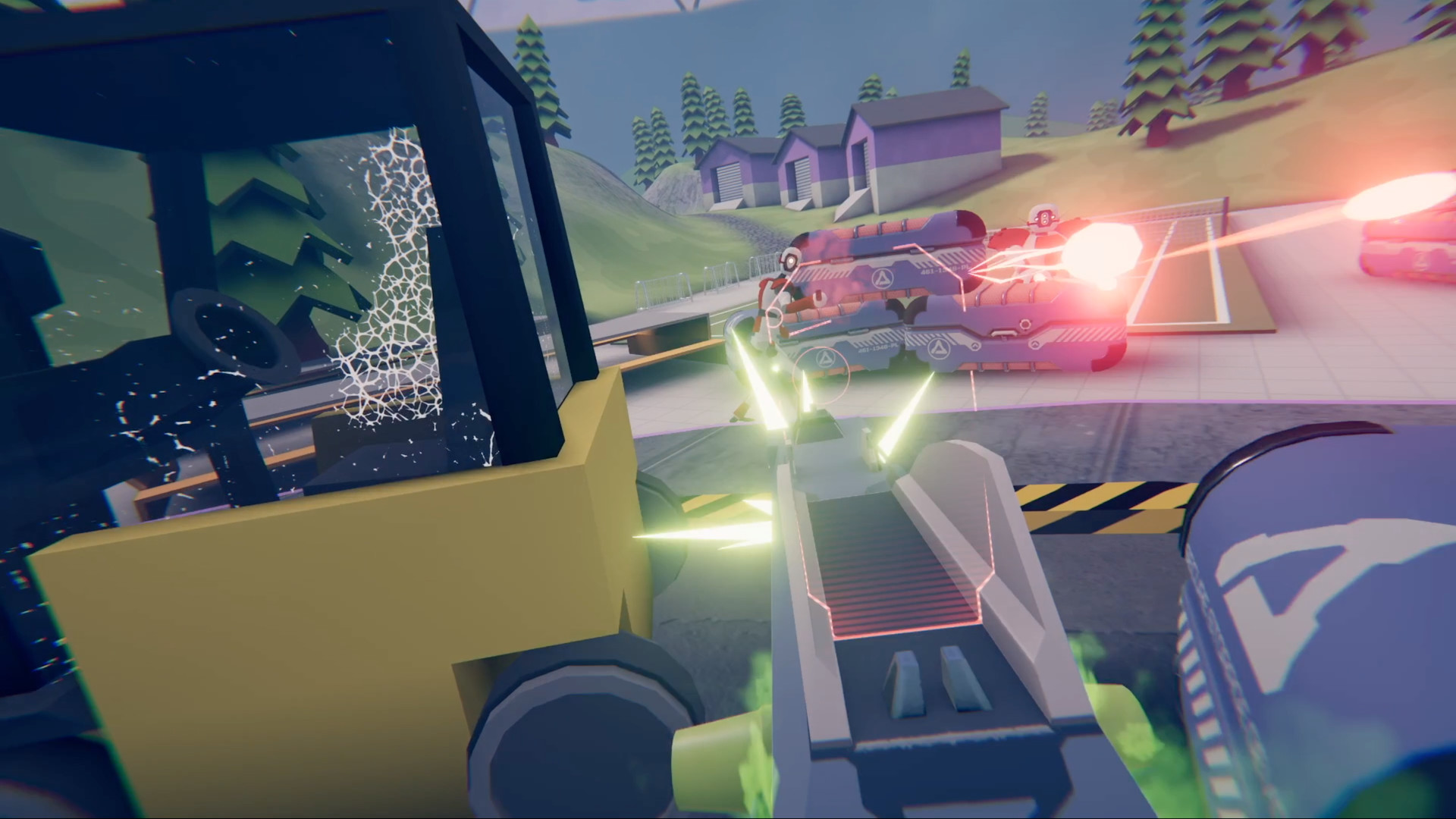
In conclusion, I think Vertigo was a solid experience, despite it’s flaws. For a solo developer’s first game, it’s pretty impressive and well designed. I would usually say that I look forward to what the dev has got going on next, but I already know what it is. It’s Vertigo 2, which just recently came out this year. I’ve already beaten it, and you’ll know what I think about it in my next review covering it. Should you play Vertigo Remastered before playing Vertigo 2? In my opinion, yes. I think the older game still holds up okay and you’ll appreciate all the improvements the sequel implements after understanding what the first game was all about.
Half-Life 2 was a massive jump in quality from Half-Life 1, and pretty much the exact same thing can be said about the Vertigo games, but we’ll get to that when we review the sequel. I’ll see you then.







